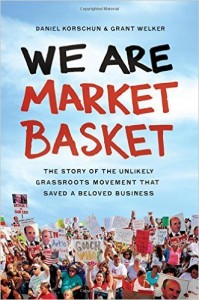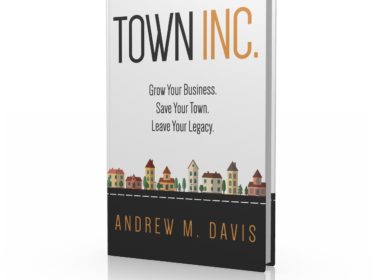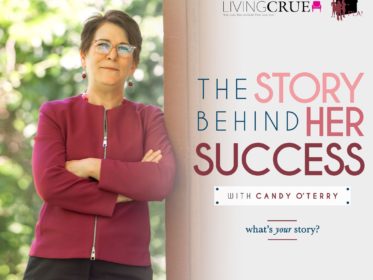 Since its release last month, I’ve read the book, We Are Market Basket, twice.
Since its release last month, I’ve read the book, We Are Market Basket, twice.
Yes, it’s a great book and a wonderful story. Reading it helped me relive the exciting and emotional roller coaster of last summer’s customer boycott. Along with thousands of other loyal shoppers, I boycotted my local store and avidly followed the news and updates on Twitter.
But the reason I’ve read the book twice — and plan on reading it a couple more times — is because it’s packed with lessons on how to run a people-centered business.
Market Basket runs its business on the philosophy of “People first, groceries second.”
The company lives this value in two ways.
Market Basket associates — top to bottom — put the customer first in hundreds of ways large and small. If you can’t find an item on the shelf, for example, ask any associate (including a manager or store director, so designated by his or her red jacket) where the item is located and that person will walk you to the aisle and location on the shelf. I’ve even had associates volunteer to go into the “back” and see if the new shipment has been uncrated yet.
Associates will also help the elderly do their shopping. The young men who shag carriages will help you put your groceries in the car and then pleasantly wish you a good day.
Putting people first also means that the company takes very good care of its associates. In We Are Market Basket, Artie T. Demolous, the CEO, is quoted as saying that if you take good care of employees, everything else takes care of itself.
Because it takes very good care of its associates, Market Basket has loyal employees — the kind that stay with the company for decades.
Market Basket also has another philosophy, which I didn’t know about until I read the book. The company ignores what everyone else is doing and does things its own way — even if that “way” is contrary to current industry practices.
Other grocery chains in the region offer loyalty cards. Not Market Basket. They believe everyone is entitled to the same low prices. And, these low prices are the same across items store-to-store!
Other grocery chains have self-checkout kiosks. Not Market Basket. Instead, they have 12 items or fewer lanes and will even open a “lane” on the fly by rolling in a portable register during really busy times.

Other grocery chains have their employees stock items before the store opens. Market Basket? Their associates stock items all day long. During busy times, aisles can become really crowded. But Market Basket instituted this practice because they want associates to know what people buy and how they reach for things on the shelf in order to make those really small changes that improve the customer experience. And, they want customers and associates to bump into each other. Sorta like a big family get-together in the kitchen for a holiday meal.
And finally, other grocery chains cater to what’s called daily shoppers — people who shop every other day or so to pick up items for dinner. Market Basket, on the other hand, caters to big families who do their shopping weekly, their carriages overflowing with food and other products.
The company does these things because they’ve found them to make good business sense. It’s why the company has made millions of dollars in profit — in an industry with low margins — carried no debt (pre-boycott; Artie T. had to take on debt to purchase the company from his cousin), offered the lowest prices of any chain AND returned millions to associates in the form of profit sharing.
Market Basket’s management, the book authors state, “has no use for people who make decisions based on what works for others.”
This sentiment really hit home for me because since the boycott, I’ve spent the last year analyzing my own business, the clients I work with, and my own values and what’s important to me.
Like everyone else, I got sucked into the social media echo chamber and spent too much time and energy trying to “keep up.” For a long time, I worried that if I didn’t have a robust social presence, I’d go out of business. (The exact opposite has proven to be true, thankfully.)
Social media also became my default marketing tactic. Mostly because it was too easy to tell people to do it.
But the more I began listening to my clients and watching how they worked, and the more I looked at how these people found me, the more I realized that social media wasn’t the best tactic or use of time/energy for my clients or for me.
Over time, I began eliminating it. I’ve been off Facebook now for 18 months. I stopped posting to G+ and have pretty much given up on LinkedIn. After a short foray into Pinterest, I deleted my account, along with Tumblr and StumbleUpon.
Thankfully, I didn’t go down the Instagram road, even though I routinely see “gurus” now telling people, “Instagram has hit the 400 million mark!!! Your customers are on it and you have to be too!!!!!” Er . . . I suppose.
(If I did have an Instagram account, here’s what you’d see: turkeys. :-D)

I’ve kept Twitter because I love it and find that it suits how I work. I can tap into the stream when I have a few minutes, then leave it alone for a while.
Freeing up this time, space and energy has been wonderful for my productivity and creativity. But what’s been even better, and most unexpected, is that I’m now following my own ideas and figuring out what works for me and for my clients.
For example, I no longer work a standard eight hour day. I take two to three hours off in the middle of the day and ride my bike or work out. I work in uninterrupted blocks of time and focus on one thing at a time. I’m reading more print books — lots of novels and other interesting things. I’ve been working to improve my processes in order to be more efficient when working with clients so that I don’t waste their time.
And, when my clients are ready to move forward with their marketing, I talk to them first. What resources do they already have? What’s their schedule like? How do they work? Are they comfortable with technology? How do prospects find them now? What’s working and what’s not?
I’ve learned it takes a lot more creativity and quiet thinking to come up with strategic plans that suit them and their unique ways of doing business. So I need the downtime to let ideas bubble up.
What I’ve learned in the last year is that the most successful businesses do put people first — inside and outside the company. While a “people first” philosophy does mean great customer service, it’s much, much more than that. It also means making hundreds upon thousands of small decisions over time that improve the well-being of all concerned — customers, vendors, employees, and yes, even management.
It means basically, investing in people because without them, you don’t have a business. And that’s the most important lesson shoppers taught the rogue management of Market Basket during last summer’s boycott.
Further reading
We Are Market Basket: The Story of the Unlikely Grassroots Movement that Saved a Beloved Business, by Daniel Korschun & Grant Welker — Available at fine bookstores and libraries, too
6 Entrepreneurship Lessons from Family Businesses by the New York Times — Includes an eight minute documentary on Market Basket
We Are Market Basket — Website for and by the people





Sharon Teitelbaum
So many great resources! Generous post — thank you.
Dianna Huff
Thanks, Sharon.
Rachel Cunliffe
Thanks for recommending the book to me – I finished it last night. Amazing that we both highlighted the same quote out of the whole book:
“Market Basket’s management has no use for people who make decisions based on what works for others.”
Your enthusiasm and energy is bubbling out of this post Dianna!
Dianna Huff
Thank you, Rachel. And I’m glad you enjoyed reading the story of a supermarket in another country!